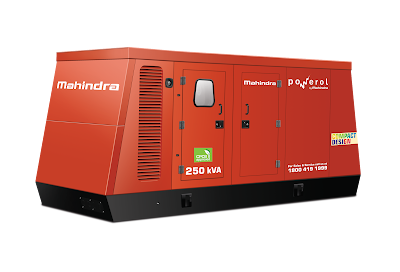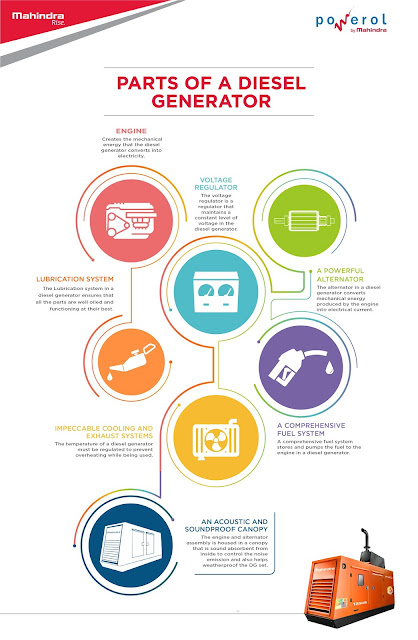We have just made our entry into the higher kVA
diesel gensets with the launch of 250kVA and 320kVA diesel gensets that
come powered with our mPOWER series engines and the advanced CRDe technology. The
newest addition is a range of 9.3 litre-engines and are designed at our R&D
hub at Mahindra Research Valley in Chennai and manufactured at our Chakan plant
near Pune.
 |
| All new 250kVA Diesel Genset. |
What are the unique
advantages of our new CRDe diesel gensets?
-
Our
CRDe (Common Rail Diesel Engine) technology is known to be future ready, heavy
duty performance and superior fuel efficiency. It reduces pollution
significantly and goes beyond the standard emission norms of gaseous pollutants.
The technology when used in our new 250
and 320kVA DG sets means a great service to the society and even business.
-
Mahindra
Powerol DG sets has a high block loading capacity which enhances the
performance of the DG set as compared to a high instantaneous load which is
very useful for heavy duty applications.
-
Our
new range of diesel gensets are well equipped with our unique DiGi-SENSE
technology which ultimately makes them smart diesel generator sets.
The performance of a smart DG can be monitored in real time from anywhere and
thus improving their uptime.
-
In
an industry that’s primarily service driven, the purchase decision of a DG set
largely depends upon its service network and aftersales service. Mahindra
Powerol Diesel gensets are supported by one of the widest network of more than
200 dealers with over 400 touchpoints spread nationwide.
-
Our
call center alert is available 24/7, is centralized and is well equipped to
provide quick support. Our team of experts can help choose the optimal most and
well suited solution to help customers in the shortest span of time.
-
These
CRDe engines in our advanced 250kVA and 320kVA diesel gensets are equipped with
high pressure fuel injection system and operate at over 1600 bar which lead to
better emission compliance.
-
We
have also designated a unique color – Coral orange to the entire range of the
new and aesthetically improved Diesel gensets.
-
Users
get superior performance and low fuel consumption.
-
It
comes with superior response capabilities which makes it suitable for all kinds
of applications.
-
These
gensets have been built sturdy and are easily operational under extreme
climatic conditions.
-
Comes
with better diagnostics and troubleshooting capabilities which aids in quick
fault finding and providing solutions.
-
The
new 250kVA
diesel generator comes with the highest ever displacement in its class
making it capable of taking instantaneous heavy load. This ultimately makes it
perfectly suited for the toughest applications ever.
-
The
new gensets come
with the heavy-duty filter that make its performance uncomplicated and
trouble-free even under highly dusty conditions.
-
The
new gensets are equipped with Mahindra’s Digi-Sense technology that makes
possible monitoring of all the critical performance parameters anytime from
anywhere.
For further information and queries regarding the new range
of diesel generator sets please visit – www.mahindrapowerol.com

